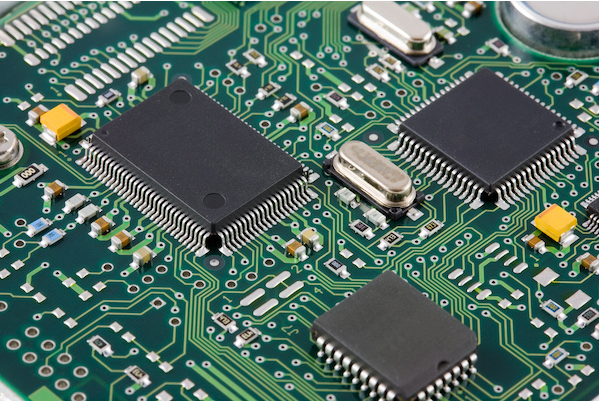

Printed Circuit Boards (PCBs) are the backbone of modern electronics, enabling the functionality of devices ranging from smartphones to aerospace systems. Machining these boards requires precision, specialized tools, and an understanding of their unique structure. This article explores the fundamentals of PCBs, how to select cutting tools for drilling and milling, and the growing role of advanced superhard tools in PCB manufacturing.

Structure and Materials
Base Material: Most PCBs use FR-4, a flame-retardant fiberglass-epoxy composite. Other materials include polyimide (for flexibility) and high-frequency laminates (for RF applications).
Copper Layers: Thin copper foils are bonded to the substrate, etched to form circuits. Boards can be single-sided, double-sided, or multi-layered (up to 50+ layers).
Protective Layers: A solder mask (usually green) insulates copper traces, while silkscreen labels components.
Functionality
PCBs replace bulky wiring by providing a platform for components like resistors, ICs, and connectors. Their precision ensures minimal signal loss, heat dissipation, and scalability for complex designs.
PCB cutting tool are special cutting tools for PCB circuit boards. PCB tools have high hardness and wear resistance, and it can perform precise and efficient cutting, slotting, milling and drilling operations on PCB boards. The selection and use of PCB tools is very important to ensure PCB manufacturing quality and precision. According to the specific processing needs and design requirements, the right PCB tool can improve production efficiency and ensure product quality.
PCB tools include the following:
1. Drill: used to drill holes on the PCB board, usually using a fine drill tip, which can achieve high precision aperture and hole position.
2. Milling: The material used to remove the surface of the PCB board, usually by rotating the tool and moving the PCB to cut the material to achieve a flat surface or a specific shape of cutting.
3. V slot tool: used to slot on the surface of the PCB board, usually using a V-shaped tools edge design, can be used to cut out right-angle boundaries, chamfer or drive marks.
4. Cutting tools: It is used to divide the entire PCB board into the required size, usually using a disk or ring blade, which can cut the PCB board quickly and accurately.
5. Cleaning tools: used to remove burrs and residues on the PCB surface to ensure that the surface of the board is flat, clean, and provides better electrical connectivity.
Machining PCBs involves two primary processes: drilling (creating holes for vias and component leads) and milling/routing (cutting outlines, slots, or isolating traces). Selecting the right tools is critical for accuracy and minimizing damage to delicate materials.
Drilling Tools
PCB drilling requires micro-sized tools to create holes as small as 0.1 mm in diameter. Key considerations include:
Material:
Carbide (Tungsten Carbide): The standard choice for PCB drilling. Carbide offers rigidity, wear resistance, and the ability to handle high spindle speeds (up to 150,000 RPM).
Diamond-Coated Drills: Used for abrasive materials like ceramic-filled boards or high-volume production.
Geometry:
Point Angle: A 130°–140° tip angle prevents wandering and ensures clean entry/exit.
Flute Design: Straight or spiral flutes efficiently remove debris. Fewer flutes (1–2) reduce clogging in small holes.
Size Tolerance:
Drill diameters must match design specs (e.g., 0.3 mm for vias). Tool rigidity prevents deflection during high-speed drilling.
Milling Tools
PCB milling involves removing copper and substrate to isolate traces or cut board outlines. Tools must balance precision with minimal tool wear.
End Mills:
V-Bits (Engraving Bits): Angled tips (30°–60°) for fine trace isolation and text engraving.
Flat End Mills: For contour cutting and slotting.
Key Parameters:
Coatings: Titanium Nitride (TiN) coatings reduce friction and extend tool life.
Chip Load: Proper feed rates prevent overheating. For FR-4, a chip load of 0.005–0.01 mm/tooth is typical.
Spindle Speed: Lower speeds (24,000–50,000 RPM) compared to drilling to avoid melting the substrate.
Tool Diameter:
Smaller diameters (0.2–3 mm) enable intricate routing, while larger tools (3–6 mm) handle board outlines.
Recently, we have received requests from customers in Pakistan for PCD and carbide milling tools to process Fr4 materials.
In the selection of PCB plates, the FR-4 often mentioned is the abbreviation for a class of glass fiber reinforced epoxy resin materials. But strictly speaking, Fr4 is not a material name, but the fire rating of the material. Glass fiber cutting processing is difficult, poor thermal conductivity, tool wear is serious, low efficiency cutting conditions deteriorate, processing glass fiber is easy to produce wire drawing, delamination, tearing and so on. The use of ordinary tools or coated tools processing glass fiber is difficult to cut processing, poor thermal conductivity, so the tool is prone to serious wear, coating tools spalling. The tool hardness is high, the wear resistance can have good impact resistance, bending resistance and vibration resistance, has good stability, the tool tip is sharp, the cutting force is small, the glass fiber parts are cut, and the finish of the parts after processing can meet the requirements.
Milling tools for drilling and machining high-end electronic circuit boards (PCB). Product specifications from 0.1MM- 6.5MM, material selection of PCD tool and carbide as the main material, suitable for Fr4 ceramic plate and other kinds of PCB processing.
Semiconductor Industry Solutions
PCD & PCBN Tools Grinding Industry
Diamond Cutting Bruting Polishing
Add: No.171 Zhongyuan Rd, Zhongyuan District, Zhengzhou, 450001, Henan, China
Tel: +86-371-86545906
Phone / Whats App: +86 18339903057
E-mail: [email protected]



